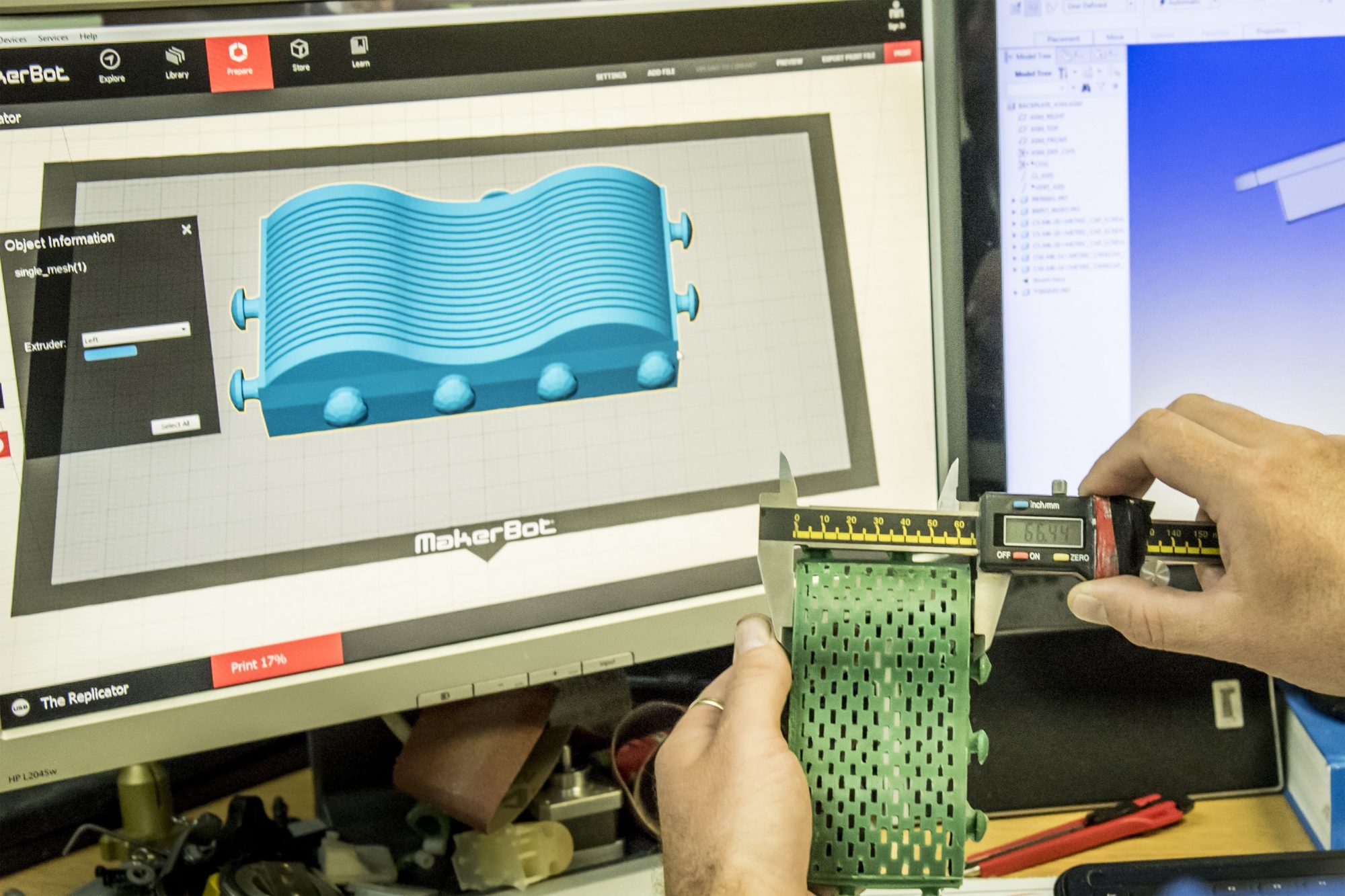Multotec’s use of 3D printing over the past two years has proved this technology’s ability to produce prototypes for customers quickly and cost effectively, according to Multotec Manufacturing Technology Manager, Chris Oldewage. “Our 3D printing facilities bring designs to life, and allow for physical and visual interaction during concept development,” he says. “We can now produce a prototype within 24 hours, improving our response time to identified opportunities.”
He highlights that full-sized prototypes can even be tested on the company’s testing rigs, so that their practical application can be proved before advancing to tooling stage. Reprinting can be quickly conducted to incorporate fine tuning and minor adjustments.
The 3D printed parts are used as the pattern to produce a mould for products such as screen panels; silicon is firstly cast around the pattern, and then removed after it is cured. This silicon mould is used to make prototype screen panels from the required polyurethane material.
“The ease of use of these 3D printers allows for an accurate prototype to be produced far more quickly than conventional tooling,” he says. “Tooling is relatively costly, so the 3D printing is definitely a more cost effective option.”
According to Dave Hunt, mould designer at Multotec’s technical service centre, the technology removes the guess work from the product development process. Part of continuous improvement is to improve existing tooling; being able to print the new mould parts make it easy to validate the design and functionality before making the actual steel parts.
Multotec runs two types of heat lamination 3D printers, which can print objects of various sizes. The company has also invested in an extruder so that it can extrude cords to the same specifications that it uses in the manufacturing process.
“3D printing technology is being used by business units throughout the Multotec Group, and we have successfully used it to develop new products and to improve our produce development timelines,” says Oldewage. “These 3D models are also valuable tools to employ during our training sessions, to ensure better visual understanding among staff and customers.”











